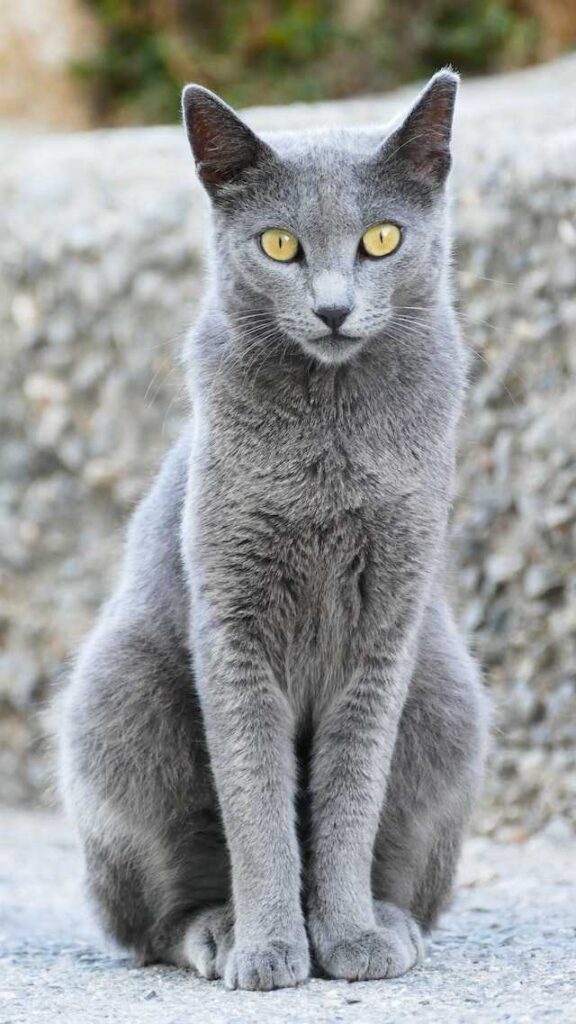The Russian Blue Cat commonly referred to as just Russian Blue, is a cat breed with colors that vary from a light shimmering silver to a darker, slate grey.
The short, dense coat, which stands out from the body, has been the breed’s hallmark for more than a century.

The Russian Blue is a naturally occurring breed that may have originated in the port of Arkhangelsk in Russia. They are also sometimes called Archangel Blues.
It is believed that sailors took them from the Archangel Isles to Great Britain and Northern Europe in the 1860s. The first reference to an Archangel Cat appears in British print in 1862
Facts
Russian Blue originates from the Archangel Isles in the northern part of Russia
Russian Blue can reach 8 to 15 pounds of weight.
Russian Blue cats are born with yellow eyes.
Russian Blue have emerald green eyes once fully grown.
Russian Blue cat was shown at the first Cat Show in London.
Russian Blue cats have short, double-layered coats.
Russian Blue cats are actually black cats with faded coats.
If a Russian Blue mates with a black cat, they will produce a litter of black and gray kittens.
Russian Blue has a low shedding coat.

The Russian Blue is a curious and tranquil animal.
Russian Blues have a life expectancy of around 10–20 years.
Males will typically be larger than females.
Their gestation period is approximately 64 days.
Russian Blue gives birth to 3 kittens on average.
Short fur of Russian Blue needs to be brushed two times per week.
Russian Blue is suitable for families with children and other cats.
The Nyan Cat was inspired by the Russian Blue Cat.
Russian Blues have impeccable grooming habits.
Russian Blue cats are easily trainable.
Russian Blues are curious and quick to learn.
Russian Blues almost disappeared around World War II.
The Russian Blue breed is a very vocal cat.
